 W
WAsceticism is a lifestyle characterized by abstinence from sensual pleasures, often for the purpose of pursuing spiritual goals. Ascetics may withdraw from the world for their practices or continue to be part of their society, but typically adopt a frugal lifestyle, characterised by the renunciation of material possessions and physical pleasures, and also spend time fasting while concentrating on the practice of religion or reflection upon spiritual matters. Various individuals have also attempted an ascetic lifestyle to free themselves from addictions, some of them particular to modern life, such as alcohol, tobacco, drugs, entertainment, sex, food, etc.
 W
WAbstinence is a self-enforced restraint from indulging in bodily activities that are widely experienced as giving pleasure. Most frequently, the term refers to sexual abstinence, but it can also mean abstinence from alcohol, drugs, food, etc.
 W
WAjivika is one of the nāstika or "heterodox" schools of Indian philosophy. Believed to be founded in the 5th century BCE by Makkhali Gosala, it was a śramaṇa movement and a major rival of Vedic religion, early Buddhism and Jainism. Ājīvikas were organised renunciates who formed discrete communities. The precise identity of the Ajivikas is not well known, and it is even unclear if they were a divergent sect of the Buddhists or the Jains.
 W
WAn ashram is a spiritual hermitage or a monastery in Indian religions.
 W
WA bed of nails is an oblong piece of wood, the size of a bed, with nails pointing upwards out of it. It appears to the spectator that anyone lying on this "bed" would be injured by the nails, but this is not so. Assuming the nails are numerous enough, the weight is distributed among them so that the pressure exerted by each nail is not enough to puncture the person's skin.
 W
WCenobitic monasticism is a monastic tradition that stresses community life. Often in the West the community belongs to a religious order, and the life of the cenobitic monk is regulated by a religious rule, a collection of precepts. The older style of monasticism, to live as a hermit, is called eremitic. A third form of monasticism, found primarily in Eastern Christianity, is the skete.
 W
WChilla is a spiritual practice of penance and solitude in Sufism known mostly in Indian and Persian traditions. In this ritual a mendicant or ascetic attempts to remain seated in a circle practicing meditation techniques without food for 40 days and nights in imitation of the Arba'een. The word chilla is derived from the Persian word chehel "forty". Chilla is commonly performed in a solitary cell called a chilla-khana.
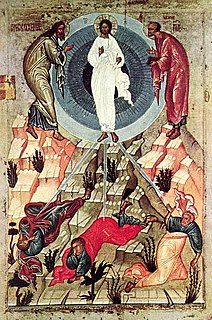 W
WChristian monasticism is the devotional practice of Christians who live ascetic and typically cloistered lives that are dedicated to Christian worship. It began to develop early in the history of the Christian Church, modeled upon scriptural examples and ideals, including those in the Old Testament, but not mandated as an institution in the scriptures. It has come to be regulated by religious rules and, in modern times, the Canon law of the respective Christian denominations that have forms of monastic living. Those living the monastic life are known by the generic terms monks (men) and nuns (women). The word monk originated from the Greek μοναχός, itself from μόνος meaning 'alone'.
 W
WConsecrated life is a state of life in the Catholic Church lived by those faithful who are called to follow Jesus Christ in a more exacting way.
 W
WCynicism is a school of thought of ancient Greek philosophy as practiced by the Cynics. For the Cynics, the purpose of life is to live in virtue, in agreement with nature. As reasoning creatures, people can gain happiness by rigorous training and by living in a way which is natural for themselves, rejecting all conventional desires for wealth, power, and fame, and even flouting conventions openly and derisively in public. Instead, they were to lead a simple life free from all possessions.
 W
WThe degrees of Eastern Orthodox and Eastern Catholic monasticism are the stages an Eastern Orthodox monk or nun passes through in their religious vocation.
 W
WThe Desert Fathers were early Christian hermits, ascetics, and monks who lived mainly in the Scetes desert of Egypt beginning around the third century AD. The Apophthegmata Patrum is a collection of the wisdom of some of the early desert monks and nuns, in print as Sayings of the Desert Fathers. The most well known was Anthony the Great, who moved to the desert in AD 270–271 and became known as both the father and founder of desert monasticism. By the time Anthony died in AD 356, thousands of monks and nuns had been drawn to living in the desert following Anthony's example—his biographer, Athanasius of Alexandria, wrote that "the desert had become a city." The Desert Fathers had a major influence on the development of Christianity.
 W
WDesert Mothers is a neologism, coined in feminist theology in analogy to Desert Fathers, for the ammas or female Christian ascetics living in the desert of Egypt, Palestine, and Syria in the 4th and 5th centuries AD. They typically lived in the monastic communities that began forming during that time, though sometimes they lived as hermits. Other women from that era who influenced the early ascetic or monastic tradition while living outside the desert are also described as Desert Mothers.
 W
WEmber days are quarterly periods of prayer and fasting in the liturgical calendar of Western Christian churches. These fasts traditionally take place on the Wednesday, Friday, and Saturday following St Lucy's Day, the first Sunday in Lent, Pentecost (Whitsun), and Holy Cross Day, though some areas follow a different pattern. Ordination ceremonies are often held on Ember Saturdays or the following Sunday.
 W
WEndurance art is a kind of performance art involving some form of hardship, such as pain, solitude or exhaustion. Performances that focus on the passage of long periods of time are also known as durational art or durational performances.
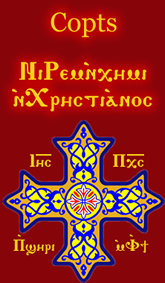 W
WThe Copts, who belong mostly to the Coptic Orthodox Church, observe fasting periods according to the Coptic calendar. These fasting periods are exceeded by no other Christian community except the Orthodox Tewahedo. Out of the 365 days of the year, Copts often fast between 180 to 210 days.
 W
WGero is a 17th-century ascetic book in Basque composed by Pedro Agerre, better known as Axular. It is considered one of the masterpieces of classic Basque prose and literature altogether.
 W
WGymnosophists is the name given by the Greeks to certain ancient Indian philosophers who pursued asceticism to the point of regarding food and clothing as detrimental to purity of thought. They were noted to have been vegetarian by several Greek authors. The above description very well matches with Jain Digambara Saints who practice extreme penance in terms of fasting and don't eat root vegetables, vegetables with many seeds etc. There were also gymnosophists in upper Egypt who were called Ethiopean Gymnosophists by Apollonius of Tyana.
 W
WA hermit, or eremite, is a person who lives in seclusion. Eremitism plays a role in within a variety of religions.
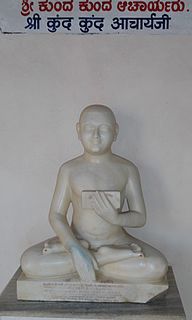 W
WJain monasticism refers to the order of monks and nuns in the Jain community and can be divided into two major denominations: the Digambara and the Śvētāmbara. The monastic practices of two the major sects vary greatly, but the major principles of both are identical. Five mahāvratas, from Mahavira's teachings, are followed by all Jain ascetics. Historians believe that a united Jain sangha (community) existed before 367 BCE, about 160 years after the moksha (liberation) of Mahavira. The community then gradually divided into the major denominations.
 W
WAsceticism is a lifestyle characterized by abstinence from sensual pleasures, often for the purpose of pursuing spiritual goals. Asceticism has not been a dominant theme within Judaism, but minor to significant ascetic traditions have been a part of Jewish spirituality.
 W
WKaupinam, kaupina or langot or Lungooty is an undergarment worn by Indian men as a loincloth or underclothing, usually by pehalwan exercising or sparring in dangal at traditional wrestling akharas. It is made up of a rectangular strip of cotton cloth used to cover the genitals with the help of the strings connected to the four ends of the cloth for binding it around the waist of the wearer. It is used by wrestlers in the game of Kushti or traditional Indian wrestling in the akhada and during practice sessions and training.
 W
WLama is a title for a teacher of the Dharma in Tibetan Buddhism. The name is similar to the Sanskrit term guru, meaning "heavy one", endowed with qualities the student will eventually embody. The Tibetan word "Lama" means "highest principle", and less literally "highest mother" or "highest parent" to show close relationship between teacher and student.
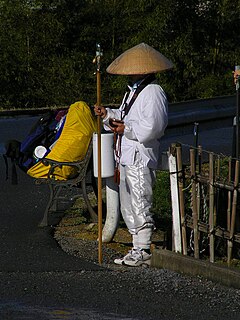 W
WA mendicant is one who practices mendicancy, relying chiefly or exclusively on alms to survive. In principle, mendicant religious orders own little property, either individually or collectively, and in many instances members have taken a vow of poverty, in order that all their time and energy could be expended on practicing their respective faith, preaching and serving society.
 W
WA cell is a small room used by a hermit, monk, nun or anchorite to live and as a devotional space. Cells are often part of larger communities cenobitic monasticism such as Catholic and Orthodox monasteries and Buddhist vihara, but may also form stand-alone structures in remote locations. The word cell comes from the Old French celle meaning a monastic cell, itself from the Latin meaning "room", "store room" or "chamber".
 W
WMonastic silence is a spiritual practice recommended in a variety of religious traditions for purposes including facilitation of approaching deity, and achieving elevated states of spiritual purity. It may be in accordance with a monk's formal vow of silence, but can also engage laity who have not taken vows, or novices who are preparing to take vows. Monastic silence is more highly developed in the Roman Catholic faith than in Protestantism, but it is not limited to Catholicism. The practice has a corresponding manifestation in the Orthodox church, which teaches that silence is a means to access the deity, to develop self-knowledge, or to live more harmoniously. Theophilus, patriarch of Alexandria, placed the virtue of silence on par with the faith itself in a synodal letter from AD 400. "Monks—if they wish to be what they are called—will love silence and the Catholic faith, for nothing at all is more important than these two things."
 W
WReligious vows are the public vows made by the members of religious communities pertaining to their conduct, practices, and views.
 W
WA monk is a person who practices religious asceticism by monastic living, either alone or with any number of other monks. A monk may be a person who decides to dedicate his life to serving all other living beings, or to be an ascetic who voluntarily chooses to leave mainstream society and live his or her life in prayer and contemplation. The concept is ancient and can be seen in many religions and in philosophy.
 W
WMortification of the flesh is an act by which an individual or group seeks to mortify, or put to death, their sinful nature, as a part of the process of sanctification. Mortificaton of the flesh is undertaken in order to repent for sins and share in the Passion of Jesus. In Christianity, common forms of mortification that are practiced to this day include fasting, abstinence, as well as pious kneeling. Also common among Christian religious orders in the past were the wearing of sackcloth, as well as flagellation in imitation of Jesus of Nazareth's suffering and death by crucifixion. Christian theology holds that the Holy Spirit helps believers in the "mortification of the sins of the flesh." Old Testament precursors include Zechariah 13:6 and I Kings 18:28-29. Although the term 'mortification of the flesh', which is derived from Romans 8:13 and Colossians 3:5 in the Bible, is primarily used in a Christian context, other cultures may have analogous concepts of self-denial; secular practices exist as well. Some forms unique to various Asian cultures are carrying heavy loads and immersion in water.
 W
WThe novitiate, also called the noviciate, is the period of training and preparation that a Christian novice monastic, apostolic, or member of a religious order undergoes prior to taking vows in order to discern whether they are called to vowed religious life. It often includes times of intense study, prayer, living in community, studying the vowed life, deepening one's relationship with God, and deepening one's self-awareness. The canonical time of the novitiate is one year; in case of additional length, it must not be extended over two years. In the Eastern Orthodox Church, the novitiate is officially set at three years before one may be tonsured a monk or nun, though this requirement may be waived. The novitiate is in any case a time both for the novice to get to know the community and the community to get to know the novice. The novice should aspire to deepening their relationship to God and discovering the community's charism. The novitiate in many communities includes a concentrated program of prayer, study, reflection and limited ministerial engagement.The novitiate, through which life in an institute is begun, is arranged so that the novices better understand their divine vocation, and indeed one which is proper to the institute, experience the manner of living of the institute, and form their mind and heart in its spirit, and so that their intention and suitability are tested. —CIC, can. 646
 W
WA nun is a woman who vows to dedicate her life to religious service, typically living under vows of poverty, chastity, and obedience in the enclosure of a monastery or convent. The term is often used interchangeably with religious sisters who do take simple vows but live an active vocation of prayer and charitable works.
 W
WA Pattavali, Sthaviravali or Theravali, is a record of a spiritual lineage of heads of monastic orders. They are thus spiritual genealogies. It is generally presumed that two successive names are teacher and pupil. The term is applicable for all Indian religions, but is generally used for Jain monastic orders.
 W
WPole sitting is the practice of sitting on top of a pole for extended lengths of time, generally used as a test of endurance. A small platform is typically placed at the top of the pole for the sitter. Led by the stunt actor and former sailor Alvin "Shipwreck" Kelly, flagpole sitting was a fad in the mid-to-late 1920s, but mostly died out after the start of the Great Depression.
 W
WA hermitage can either be a place where a hermit lives in seclusion from the world, or a building or settlement where a person or a group of people lived religiously, in seclusion. When included in the name of continental European properties or churches, any meaning is often imprecise, and may refer to some distant period of the history of what is today a property that is either a normal parish church, or ceased to have any religious function some time ago. Secondary churches or establishments run from a monastery were often called "hermitages".
 W
WPraxis, a transliteration of the Greek word πρᾶξις, means "practice, action, doing". More particularly, it means either:practice, as distinguished from theory, of an art, science, etc.; or practical application or exercise of a branch of learning; habitual or established practice; custom.
 W
WPythagoreanism originated in the 6th century BC, based on the teachings and beliefs held by Pythagoras and his followers, the Pythagoreans. Pythagoras established the first Pythagorean community in Crotone, Italy. Early Pythagorean communities spread throughout Magna Graecia.
 W
WQalandar in Islam is used as a title for some Sufi saints. Some people for whom the title is used are Lal Shahbaz Qalandar, Bu Ali Shah Qalandar, Shams Ali Qalandar, Rabia Basri and Qalander Baba Auliya,[[Makhdoom Mahmood Mastwaar Qalandar](Qalandar Anjum ].
 W
WA religious habit is a distinctive set of religious clothing worn by members of a religious order. Traditionally some plain garb recognizable as a religious habit has also been worn by those leading the religious eremitic and anchoritic life, although in their case without conformity to a particular uniform style.
 W
WReligious vows are the public vows made by the members of religious communities pertaining to their conduct, practices, and views.
 W
WThe Rule of Saint Benedict is a book of precepts written in 516 by Benedict of Nursia for monks living communally under the authority of an abbot.
 W
WSexual abstinence or sexual restraint is the practice of refraining from some or all aspects of sexual activity for medical, psychological, legal, social, financial, philosophical, moral, or religious reasons. Sexual abstinence is distinct from asexuality, which is a sexual orientation where people do not feel sexual attraction. Celibacy is sexual abstinence generally motivated by factors such as an individual's personal or religious beliefs. Sexual abstinence before marriage is required in some societies by social norms, or, in some countries, even by laws, and is considered part of chastity.
 W
WA starving artist is an artist who sacrifices material well-being in order to focus on their artwork. They typically live on minimum expenses, either for a lack of business or because all their disposable income goes toward art projects. Related terms include starving actor and starving musician.
 W
WTapas is a variety of austere spiritual meditation practices in Indian religions. In Jainism, it means asceticism ; in Buddhism, it denotes spiritual practices including meditation and self-discipline; and in the different traditions within Hinduism it means a spectrum of practices ranging from asceticism, inner cleansing to self-discipline by meditation practices. The Tapas practice often involves solitude, and is a part of monastic practices that are believed to be a means to moksha.
 W
WTeetotalism is the practice or promotion of total personal abstinence from alcoholic beverages. A person who practices teetotalism is called a teetotaler or is simply said to be teetotal. The teetotalism movement was first started in Preston, England, in the early 19th century. The Preston Temperance Society was founded in 1833 by Joseph Livesey, who was to become a leader of the temperance movement and the author of The Pledge: "We agree to abstain from all liquors of an intoxicating quality whether ale, porter, wine or ardent spirits, except as medicine." Today, a number of temperance organizations exist that promote teetotalism as a virtue.
 W
WThe Therapeutae were a religious sect which existed in Alexandria and other parts of the ancient Greek world.
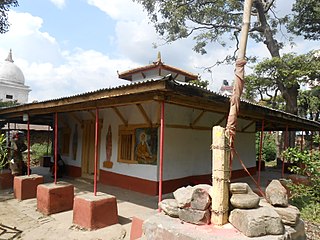 W
WUdasi is a religious sect of ascetics centred in northern India. Rising to prominence in the 17th century, and gaining control of Sikh shrines in the 18th century, they were notable interpreters of the Sikh philosophy during that time. However, their religious practices border on a syncretism of Sikhism and Hinduism, including idolatry, and they did not conform to the Khalsa standards as ordained by Guru Gobind Singh. When the Singh Sabha, dominated by Khalsa Sikhs, would hold them responsible for indulging in ritual practices antithetical to Sikhism, as well as personal vices and corruption, the Udasi mahants were expelled from the Sikh shrines.
 W
WThe Vitae Patrum is an encyclopedia of hagiographical writings on the Desert Fathers and Desert Mothers of early Christianity. The bulk of the original texts date from the third and fourth centuries. The Lives that were originally written in Greek were translated into Latin between the fourth and the seventh century. An Italian vernacular translation was made by Dominican friar Domenico Cavalca from Pisa at the beginning of the fourteenth century.
 W
WA yogi is a practitioner of Yoga, including a sannyasin or practitioner of meditation in Indian religions. The feminine form, sometimes used in English, is yogini.